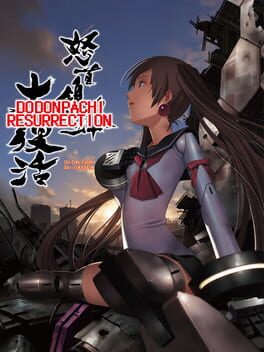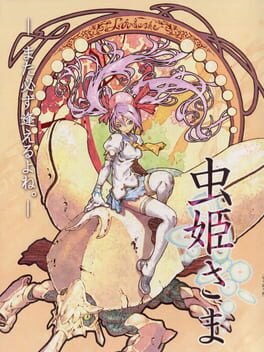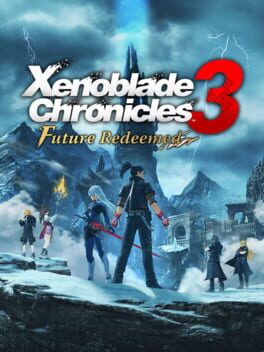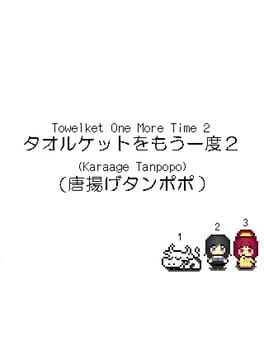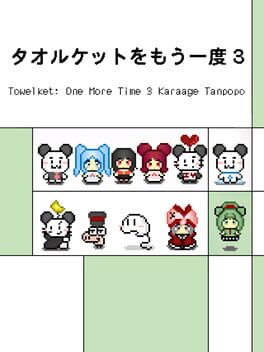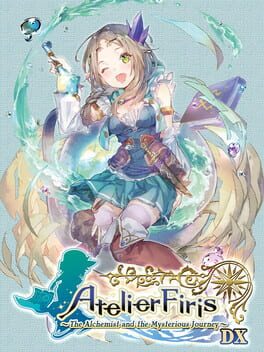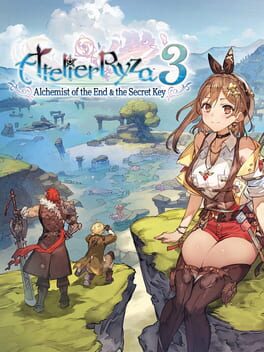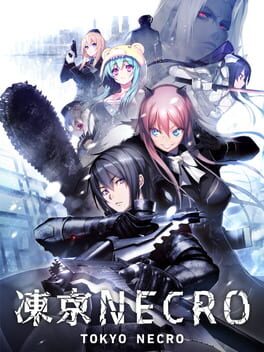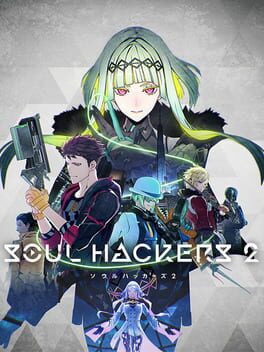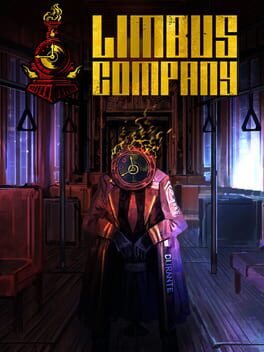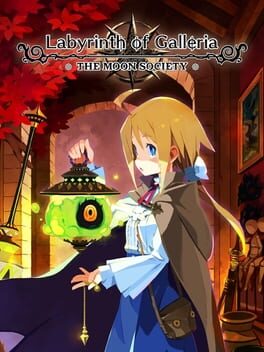Apocynadeae
A gameplay loop is a concept that permeates thorought every game that has ever been made. WIth the constant sense of progression that exists as more hours of one's lives are spent in the endless march to read the end of a work, you inherently get used to this loop. It may be something erroneously simple or something vehemently more complex to sift through, but the process of finishing a game requires this loop to become second nature. In this sense, these shoot-em-up games are the idea of a gameplay loop solidified into a pure game. You don't "finish" a shoot-em-up. Of course, you could; you can create an arbitrary goal for you or consider it a done deal when you reach the final stage. You can make that goal a 1cc, so on and so forth, but that doesn't solidify "finishing" them. As you reach the ending you create for yourself, there is always a higher ceiling to reach. Thus the only thing that really creates an ending is yourself and your own mentality.
DoDonPachi Resurrection is this very idea of an infinite gameplay loop, seamlessly sewn together with an actual loop with its story. In the fires of its creation, what molds its sense of self is that very relationship between a gameplay loop and an actual loop. As a very, very, very quick summary of its plot, DoDonPachi Resurrection has you, as the pilot, go back in time to stop a war in the future, caused by a rogue AI. However, the real plot kicks in by the end: in the process of attempting to stop this, you yourself have caused the events that lead up to your leap through time. At the end of the game?
"Perhaps the future cannot be changed."
Of course, that's not all that DoDonPachi Resurrection offers. There are multiple modes, multiple ships, an entire second loop if you are good enough to get through a run with the strict requirements it needs to access it. There's Arrange modes, Black Label (best soundtrack), so on and so forth. But despite the amount of modes, the options, how good you are, how far you get, you can never really change the past.
Thus, DoDonPachi Resurrection never ends. You simply constantly go through this same loop, no matter what, constantly. It is a loop of bullets, of organized chaos, and the continuos dance between it all. DoDonPachi Resurrection is a rondo on loop, even if the steps are different, the dance forever starts as it ends.
DoDonPachi Resurrection is this very idea of an infinite gameplay loop, seamlessly sewn together with an actual loop with its story. In the fires of its creation, what molds its sense of self is that very relationship between a gameplay loop and an actual loop. As a very, very, very quick summary of its plot, DoDonPachi Resurrection has you, as the pilot, go back in time to stop a war in the future, caused by a rogue AI. However, the real plot kicks in by the end: in the process of attempting to stop this, you yourself have caused the events that lead up to your leap through time. At the end of the game?
"Perhaps the future cannot be changed."
Of course, that's not all that DoDonPachi Resurrection offers. There are multiple modes, multiple ships, an entire second loop if you are good enough to get through a run with the strict requirements it needs to access it. There's Arrange modes, Black Label (best soundtrack), so on and so forth. But despite the amount of modes, the options, how good you are, how far you get, you can never really change the past.
Thus, DoDonPachi Resurrection never ends. You simply constantly go through this same loop, no matter what, constantly. It is a loop of bullets, of organized chaos, and the continuos dance between it all. DoDonPachi Resurrection is a rondo on loop, even if the steps are different, the dance forever starts as it ends.
2001
2004
im still pretty new to bullet hell games but theyre a genre of games id really wanna get into more and learn more of. regardless I did the normal, arrange and 1.5 modes, and i really enjoyed them all. I think arrange is probably my preferred way, but I also really enjoy the gameplay style that 1.5 incentivizes with its speed and your absolute destructive capabilities. big fan of the soundtrack, the visuals, really its a pretty great controlled experience and i think ill probably whittle away at it more and more as i get more used to these kinds of games
The idea that this is what should have been Xenoblade 3's base game is one I think is exceedingly silly and fundamentally misunderstands what both Xenoblade 3 and this are really going for; the Xenoblade series is never one that outright displays a full connection nor is that the appeal of them. Xenoblade Chronicles 3 is an ending in every sense of the world: the world we see is a world stagnated, and one we must kickstart the death of for the birth of something new. It is the process of saying goodbye that defines an ending in many shapes and forms.
Future Redeemed is not an ending. Nothing about is truly an ending. Rather, it's a prologue. It's obvious that it concludes some of the plot threads that tied the setting of the Xenoblade series together, however, that doesn't necessarily constitutes an ending. While the base game focuses on the actual process of farewells and letting go of the past, Future Redeem is what comes after that goodbye. It's something that we all have to work towards, ceaselessly, in order to create something beautiful.
Outside of that, Future Redeemed was definetly a nice experience. I was expecting something that would shine off some of my gripes with the ending portions of Xenoblade 3, and while it doesn't do that, it instead does create a stronger foundation for what Takahashi wishes to do after while creating some nice, but nonetheless unnecessary fanservice. There is that wish that it would go all the way and have Rex talking about the Salvager's Code and whatnot, but that's not necessary; Rex and Shulk are amazing as mentor figures, both in the literal and thematic sense. They are the foundation for the future, and the way that is handled is great. Outside of that, Matthew and A have some absolutely strong chemistry as partners, making both of them exceedingly fun characters to watch in action.
While the combat of Future Redeemed is more or less the same as base Xenoblade 3's, I do have a small gripe with the way the classes were set up. Nikol and Shulk are both Kevesi Defenders, so they have no reliable way to continue gaining aggro. Their skills aren't really good for it, and Matthew/Rex are both so consistent with their damage dealing that it was common for Rex to spam Double Spinning Edge, die in one hit, revive and repeat. Other than that, the world of Future Redeemed is a much smaller one, but much more populated in a way that does incentivizes exploration. Not to say it's better executed than 3, because I think both are great in their different styles, but regardless, it does notably benefit exploration much more. Whether that's a positive or a negative is up to you, though, as character growth is directly tied to affinity levels and exploration. It's definetly better realized than Torna's Community Level, something that's stopped me from ever really making an attempt to finish the game, but it's still somewhat notable that Monolith attempted to pad out the length of the DLC for all it's worth.
Regardless, what Future Redeemed satisfied me enough. It's not a replacement for Xenoblade 3 by any extent, but regardless, it was a work I greatly enjoyed playing, and one I'm excited for what comes next in Takahashi's mythos.
Future Redeemed is not an ending. Nothing about is truly an ending. Rather, it's a prologue. It's obvious that it concludes some of the plot threads that tied the setting of the Xenoblade series together, however, that doesn't necessarily constitutes an ending. While the base game focuses on the actual process of farewells and letting go of the past, Future Redeem is what comes after that goodbye. It's something that we all have to work towards, ceaselessly, in order to create something beautiful.
Outside of that, Future Redeemed was definetly a nice experience. I was expecting something that would shine off some of my gripes with the ending portions of Xenoblade 3, and while it doesn't do that, it instead does create a stronger foundation for what Takahashi wishes to do after while creating some nice, but nonetheless unnecessary fanservice. There is that wish that it would go all the way and have Rex talking about the Salvager's Code and whatnot, but that's not necessary; Rex and Shulk are amazing as mentor figures, both in the literal and thematic sense. They are the foundation for the future, and the way that is handled is great. Outside of that, Matthew and A have some absolutely strong chemistry as partners, making both of them exceedingly fun characters to watch in action.
While the combat of Future Redeemed is more or less the same as base Xenoblade 3's, I do have a small gripe with the way the classes were set up. Nikol and Shulk are both Kevesi Defenders, so they have no reliable way to continue gaining aggro. Their skills aren't really good for it, and Matthew/Rex are both so consistent with their damage dealing that it was common for Rex to spam Double Spinning Edge, die in one hit, revive and repeat. Other than that, the world of Future Redeemed is a much smaller one, but much more populated in a way that does incentivizes exploration. Not to say it's better executed than 3, because I think both are great in their different styles, but regardless, it does notably benefit exploration much more. Whether that's a positive or a negative is up to you, though, as character growth is directly tied to affinity levels and exploration. It's definetly better realized than Torna's Community Level, something that's stopped me from ever really making an attempt to finish the game, but it's still somewhat notable that Monolith attempted to pad out the length of the DLC for all it's worth.
Regardless, what Future Redeemed satisfied me enough. It's not a replacement for Xenoblade 3 by any extent, but regardless, it was a work I greatly enjoyed playing, and one I'm excited for what comes next in Takahashi's mythos.
Not entirely opposed to finishing this game at a later time and I might just chip away at it here and there but for the time being I'm kind of in two minds about it and somewhat lost interest when I got to the arm puzzles, those gimmicks feel completely unnecessary and the game is riddled with them and at this moment I can't really bring myself to continue
"Decided to go on a never-ending, mysterious journey."
The idea of an open-world isn't necessarily a new concept for contemporary game design; you could argue most of the Legend of Zelda's games are "open world", with being set in a world for the player to explore and crack open, learning of its various mysteries and details. The term has absolutely caught on more nowadays; Breath of the Wild, in an attempt to harken back to more "outdated" game design, heralded a new era of open world exploration, which multiple games have either succeeded at replicating or disastrously failed.
None of this is as important as two key components of the open-world; gameplay loop and exploration. A common complaint levied against various open world games is the fact that their worlds are "empty". Personally, I consider it to be somewhat of a misnomer. Open world games are never necessarily empty as much as it simply fails to disguise and vary its gameplay loop in an effective manner. Sonic Frontiers is the premiere example to me where I could say that the world in Sonic Frontiers is simply "empty", but that's not an accurate complaint. One could simply point at all the content and say hey, see, it's not empty! However, think of what you do in Sonic Frontiers. The loop is consistently finding resources to unlock more scenarios. You go through the world to find more stat boosts, keys, or emblems for story, leading up to the final fight in that area. Personally, I find this incredibly dull for two reasons. The world is dull, and the gameplay is always exactly the same.
Atelier Firis, in that regard, is the first attempt Gust had to create an "open world" Atelier game. Based entirely around our protagonist, Firis, and her journey thorought a part of the world that the Mysterious Trilogy is set in. The entire world that Firis travels thorought is one we, as the players, are forced to travel on foot through the process of an entire in-game year, incentivizing the players to explore as much as they can. And to reach the conclusion a little earlier than the end, I think Atelier Firis nailed the concept of an open-world to a degree no other game has ever really reached.
The game centers around the eponymous Firis, alongside her sister/siscon Liane, who go on a journey after Sophie and Plachta blew up the door of their village of Ertona, an underground sealed mining village, entirely self-sufficient. Firis has always wanted to go outside, bedazzled by the tales of the outside world given by Liane and various books she owns. Regardless, her parents forbid her to due to the dangers. As Sophie arrives and Firis gains a liking to alchemy, a deal is struck; if Firis is able to obtain an alchemy license in a year's time, she will be able to go outside as she pleases, setting off the events of the game.
The plot in Firis is sparse after that point, but Atelier games are generally never about the plot as much as they are about the characters. However, in Firis, I'd say the characters are secondary to the real crux of this game: Exploration. Since Firis is on a journey, the game's open-world formula unfolds. Rather than the world being a set of areas, separated thorought time intervals accessed in the world map, Atelier Firis does not let you fast travel through the world map, instead having to walk directly thorought all of the zones, as they are all huge, varied areas interconnected with each other. Regardless, this departure from the original style of Atelier doesn't really stop here. This isn't a guide, so I won't get too deep into the differences between Sophie and Firis (and to an extent, Ryza and the Dusk trilogy), however I will say that the one thing I thought was a little weaker was the alchemy. I enjoy Sophie's alchemy despite being very confusing at first, but the Catalyst system seemed somewhat underwhelming and I never exactly understood the best way to synthesize stuff outside of simply having decent materials.
The way Firis incentivizes exploration is great as well. Thorought the game, you obtain sidequests. These sidequests aren't always given by characters, but are more like thoughts Firis has. She usually will comment about hearing a voice, or water, and wondering what there would be in said location, thus ensuing a small trek to find the source of it. These usually give you landmarks, which are locations one can fast travel to if you're in the same area as it. There was a specific highlight with these little sidequests; during my exploration of the Traveler's Grove, I got a sidequest about a man with medicine. The location it led me to was Dona; a location which had an alchemist. Thanks to that, I was able to get a letter of recommendation as the player requires three in order to participate in the exam. Alongside that, the White Fog Forest also holds a lot of Dona Wood among other ingredients which are crucial for a lot of alchemy, so being aware of it helped a lot for later, when I could simply return and gather more.
Regardless, as said, despite the time limit present in Atelier Firis, you are very incentivized to explore the world. Through these sidequests with legitimate rewards, the more merchants you find, the bigger variety of items and the more recipes you discover, the more allies you find in the world, the very process of exploration is the most crucial aspect of the game. Everything about it lends to the game, and it helps that the exploration itself is a joy. The game, visually, is absolutely fantastic. While the character models are a little off when seen up close, the enviorments are absolutely beautiful and mesh very well with the enemy design. The one exception is that the Atelier looks kind of bad, but you get used to it.
Regardless, as you explore more, meet more of the cast, such as Angriff, a mercenary you hire, and Ilmeria, Firis's girlfriend, and as you see more of the world, meet more alchemists, obtain more clothing with different effects, resolve more sidequests, and finally reach Reisenberg and clear the exam, the credits roll. While the journey might have been a straight line, Firis was able to succeed and see the world through her eyes, learning more and growing.
Until, of course, the second part of the game. I actually love this part of the game much more than the first part; I consider it the best aspect of Firis. Gone is the time limit, you gain the ability to make many more tools to ease exploration, and the characters really start gaining more depth. After all, this aspect is less about Firis rushing to secure her freedom, but now that she has it, what will she do? From here we really do undestand more and more of these characters. Personally, I did only the necessary endings for the true ending; that being Ilmeria, Sophie, Meklet/Atomina, Liane, and Angriff's endings. All their events are absolutely great; Ilmeria and Firis's relationship is very nice and cute, with both improving each other. Liane had some of the strongest writing yet here, graduating from being just a funny siscon to someone much more genuine to watch and see how she cares for Firis as family. Sophie isn't a huge improvement from how she's written in her game, but she was great then, and just seeing her take a teaching role is nice to see. Angriff's funny, but he feels like a very genuine role model to Firis in a sense, despite still being a very unprofessional man. He cares, however; and that's great! I loved going through their events and learning of them, and by the end I loved them all almost-equallly.
Regardless, the real crux of Atelier Firis is exploration and growth. While Atelier is a series that has always been about growth, Firis's spin on it is a much more unique iteration of it. It's not simply inner growth as a human or with skills in alchemy, but it's the emergence from an egg. She leaves her nest and her growth comes from her environment and peers. It's something which is why I consider it one of the absolute best in terms of an open-world game. It isn't just good in its exploration and in the variety of its gameplay loop. The fact it IS an open world enhances it to heights the series never really saw until this point. My journey through the world that the Mysterious trilogy is nowhere near over, not simply because I'm missing two games after this, but because this game's world by itself is so dense that I feel I will never really stop loving it, the same way Firis will never really finish the mysterious journey she longed for years.
The idea of an open-world isn't necessarily a new concept for contemporary game design; you could argue most of the Legend of Zelda's games are "open world", with being set in a world for the player to explore and crack open, learning of its various mysteries and details. The term has absolutely caught on more nowadays; Breath of the Wild, in an attempt to harken back to more "outdated" game design, heralded a new era of open world exploration, which multiple games have either succeeded at replicating or disastrously failed.
None of this is as important as two key components of the open-world; gameplay loop and exploration. A common complaint levied against various open world games is the fact that their worlds are "empty". Personally, I consider it to be somewhat of a misnomer. Open world games are never necessarily empty as much as it simply fails to disguise and vary its gameplay loop in an effective manner. Sonic Frontiers is the premiere example to me where I could say that the world in Sonic Frontiers is simply "empty", but that's not an accurate complaint. One could simply point at all the content and say hey, see, it's not empty! However, think of what you do in Sonic Frontiers. The loop is consistently finding resources to unlock more scenarios. You go through the world to find more stat boosts, keys, or emblems for story, leading up to the final fight in that area. Personally, I find this incredibly dull for two reasons. The world is dull, and the gameplay is always exactly the same.
Atelier Firis, in that regard, is the first attempt Gust had to create an "open world" Atelier game. Based entirely around our protagonist, Firis, and her journey thorought a part of the world that the Mysterious Trilogy is set in. The entire world that Firis travels thorought is one we, as the players, are forced to travel on foot through the process of an entire in-game year, incentivizing the players to explore as much as they can. And to reach the conclusion a little earlier than the end, I think Atelier Firis nailed the concept of an open-world to a degree no other game has ever really reached.
The game centers around the eponymous Firis, alongside her sister/siscon Liane, who go on a journey after Sophie and Plachta blew up the door of their village of Ertona, an underground sealed mining village, entirely self-sufficient. Firis has always wanted to go outside, bedazzled by the tales of the outside world given by Liane and various books she owns. Regardless, her parents forbid her to due to the dangers. As Sophie arrives and Firis gains a liking to alchemy, a deal is struck; if Firis is able to obtain an alchemy license in a year's time, she will be able to go outside as she pleases, setting off the events of the game.
The plot in Firis is sparse after that point, but Atelier games are generally never about the plot as much as they are about the characters. However, in Firis, I'd say the characters are secondary to the real crux of this game: Exploration. Since Firis is on a journey, the game's open-world formula unfolds. Rather than the world being a set of areas, separated thorought time intervals accessed in the world map, Atelier Firis does not let you fast travel through the world map, instead having to walk directly thorought all of the zones, as they are all huge, varied areas interconnected with each other. Regardless, this departure from the original style of Atelier doesn't really stop here. This isn't a guide, so I won't get too deep into the differences between Sophie and Firis (and to an extent, Ryza and the Dusk trilogy), however I will say that the one thing I thought was a little weaker was the alchemy. I enjoy Sophie's alchemy despite being very confusing at first, but the Catalyst system seemed somewhat underwhelming and I never exactly understood the best way to synthesize stuff outside of simply having decent materials.
The way Firis incentivizes exploration is great as well. Thorought the game, you obtain sidequests. These sidequests aren't always given by characters, but are more like thoughts Firis has. She usually will comment about hearing a voice, or water, and wondering what there would be in said location, thus ensuing a small trek to find the source of it. These usually give you landmarks, which are locations one can fast travel to if you're in the same area as it. There was a specific highlight with these little sidequests; during my exploration of the Traveler's Grove, I got a sidequest about a man with medicine. The location it led me to was Dona; a location which had an alchemist. Thanks to that, I was able to get a letter of recommendation as the player requires three in order to participate in the exam. Alongside that, the White Fog Forest also holds a lot of Dona Wood among other ingredients which are crucial for a lot of alchemy, so being aware of it helped a lot for later, when I could simply return and gather more.
Regardless, as said, despite the time limit present in Atelier Firis, you are very incentivized to explore the world. Through these sidequests with legitimate rewards, the more merchants you find, the bigger variety of items and the more recipes you discover, the more allies you find in the world, the very process of exploration is the most crucial aspect of the game. Everything about it lends to the game, and it helps that the exploration itself is a joy. The game, visually, is absolutely fantastic. While the character models are a little off when seen up close, the enviorments are absolutely beautiful and mesh very well with the enemy design. The one exception is that the Atelier looks kind of bad, but you get used to it.
Regardless, as you explore more, meet more of the cast, such as Angriff, a mercenary you hire, and Ilmeria, Firis's girlfriend, and as you see more of the world, meet more alchemists, obtain more clothing with different effects, resolve more sidequests, and finally reach Reisenberg and clear the exam, the credits roll. While the journey might have been a straight line, Firis was able to succeed and see the world through her eyes, learning more and growing.
Until, of course, the second part of the game. I actually love this part of the game much more than the first part; I consider it the best aspect of Firis. Gone is the time limit, you gain the ability to make many more tools to ease exploration, and the characters really start gaining more depth. After all, this aspect is less about Firis rushing to secure her freedom, but now that she has it, what will she do? From here we really do undestand more and more of these characters. Personally, I did only the necessary endings for the true ending; that being Ilmeria, Sophie, Meklet/Atomina, Liane, and Angriff's endings. All their events are absolutely great; Ilmeria and Firis's relationship is very nice and cute, with both improving each other. Liane had some of the strongest writing yet here, graduating from being just a funny siscon to someone much more genuine to watch and see how she cares for Firis as family. Sophie isn't a huge improvement from how she's written in her game, but she was great then, and just seeing her take a teaching role is nice to see. Angriff's funny, but he feels like a very genuine role model to Firis in a sense, despite still being a very unprofessional man. He cares, however; and that's great! I loved going through their events and learning of them, and by the end I loved them all almost-equallly.
Regardless, the real crux of Atelier Firis is exploration and growth. While Atelier is a series that has always been about growth, Firis's spin on it is a much more unique iteration of it. It's not simply inner growth as a human or with skills in alchemy, but it's the emergence from an egg. She leaves her nest and her growth comes from her environment and peers. It's something which is why I consider it one of the absolute best in terms of an open-world game. It isn't just good in its exploration and in the variety of its gameplay loop. The fact it IS an open world enhances it to heights the series never really saw until this point. My journey through the world that the Mysterious trilogy is nowhere near over, not simply because I'm missing two games after this, but because this game's world by itself is so dense that I feel I will never really stop loving it, the same way Firis will never really finish the mysterious journey she longed for years.
Quick review since there isn't too much I can say about this game that comes to mind as of right now: Interesting to play after the Dusk trilogy considering how notable aspects of it carry from Shallie while also reinventing itself into a less plot focused game and one much more focused on a small cast. It's not as if these games were never about the years of life our protagonist lives through and learns from alongside the countless peers that accompany them but Sophie leans into it much more relative to Dusk considering there isn't really much of a plot or a driving impetus, and the lack of a time limit makes it much more apparent. The game is about Sophie growing as a person and an alchemist into adulthood, and the cast generally reflects on aspects of that, and the lack of focus on combat and much bigger focus on alchemy (think about how the combat level caps at 20) reflects on that as well. The wardrobe changes and Plachta's development both as a character but mechanically speaking, etc., it's all just about growth and despite a couple of problems the game has with its events I do think it's executed well enough, I like the cast and might go back some other day to do a 100% run so I can fully see what each character holds. Regardless I like these games because they're fun and relaxing and I enjoy the amount of personal experience a player has, so I'm not in a rush. Pretty obtuse and unclear but irrelevant with the Sophie Codex. Sophie and Plachta/Corneria fucked btw
2016
2022
2023
Finished the second chapter, there's a third out already (I'm not sure how many there are right now. Twelve?) and I'll get through it sooner than later but for the time being this is more of a mechanical and presentational overview. I'll update this (or make a different review) after the plot has gotten a lot farther in since it's still pretty clearly setup, but quick review: this game is still very depressingly optimistic in the same vein as Lobotomy Corporation and Library of Ruina, but considerably more lighthearted from the moment to moment. Makes sense as to why, as this is the first real dive into the City first-hand, rather than Library of Ruina having some vignettes demonstrating moments of the City. Regardless, it's fucked up but fun, and is filled with a lot of moments that switch quickly from one to the other. I also prefer the way the writing of the cast is handled; if Lobotomy and Ruina had any major issues with its writing, it's that character relationships are really nonexistant as characters barely talk to each other. Roland and Angela are easily extremely strong in Ruina thanks to this, but even Tiphereth in Lobotomy only really works by herself, and less so as a dynamic with Tiphereth.
Speaking in terms of presentation, wow, this game is beautiful. Ruina was already a good-looking game thanks to its style, but Limbus immensely improves it all. The character models during gameplay and animations are smooth and well-drawn, and the music is, as always, great. The different art styles between sprites and CGs make each moment distinct; there's a more comic book-ish style to the way it's done, but it also makes it a lot more graphic. It's somewhat like if the beginning minutes of Ruina had you see Roland's limbs being cut off visually, rather than just the intense SFX and writing. This definetly feels like what Ruina wishes it could have been.
Though in terms of comparing it to Ruina, the mechanics are somewhat of a down grade. The "Sin Resonance" gameplay is way too random. While parts of Ruina are very similar, with the resistance, stagger and health, the speed die and so on, the ways Limbus differs are generally weaker. During normal battles, you aren't able to target the units you wish to attack, but rather, have to deal with the RNG and choosing between two (well, three, counting defense (and four, counting EGO)) attacks in order to deal with them. In normal fights, this isn't too bad, but in fights like 2-18, this is a huge problem as there really isn't any counterplay to the boss of 2-18 staggering a unit immediately because you simply cannot clash with them other than obtaining different units. And since Limbus is a gacha, you aren't really able to get these units without some luck or some money.
I say generally, though, because while the normal fights have these issues, the Abnormality fights are great. You are able to select whichever Abnormality to target in the moment to moment, being able to redirect, and yeah? Thank god. These fights are extremely fun, with selecting various parts of the Abnormality and breaking them, having similar mechanics to Lobotomy Corporation's Abnormality Suppression and confinement mechanics. This is also combined with some great mixture of storytelling, such as Chapter 1 having Yuri's death linked to the mechanics of the fight, and Chapter 2's big Abnormality fight being less of an actual fight, and more you just running away from (what I assume is) The Snow Queen's castle.
Linked to the Abnormality fights are also the dungeon crawling. I'll admit, I'm a little disappointed that when Limbus was first "announced", it sold itself as a dungeon crawler as my assumptions were that it would be closer to a Wizardry deal, but the actual dungeon crawling is still very fun. It mixes the plot very well, while the actual exploration is more similar to multiple risk/reward events that benefit the player for the final fight, utilizing various EGO gifts to strengthen yourself. Utilizing all 12 Sinners is also a lot of fun, as switching between them during different fights really sells the idea of Limbus Company itself, as these Sinners have various potentials and strengths that we are able to harness and use from the moment to moment.
Limbus is also obviously riddled with bugs, with a launch that immediately went into maintenance because of 100k users, but frankly, yeah that's just Project Moon. And while the bugs and technical issues are obviously problems, it's at least extremely surprising how high-budget and high-effort Limbus is, where its style and writing hasn't been compromised for the sake of reaching a wider audience. Rather, the esoteric comedy and drama PM prides itself in is simply put in a medium that reaches a wider audience. I hope there are some changes to the battle system as being unable to select specific units to clash against makes the potential this game has much weaker, but as it stands right now? Yeah, it's fun.
Speaking in terms of presentation, wow, this game is beautiful. Ruina was already a good-looking game thanks to its style, but Limbus immensely improves it all. The character models during gameplay and animations are smooth and well-drawn, and the music is, as always, great. The different art styles between sprites and CGs make each moment distinct; there's a more comic book-ish style to the way it's done, but it also makes it a lot more graphic. It's somewhat like if the beginning minutes of Ruina had you see Roland's limbs being cut off visually, rather than just the intense SFX and writing. This definetly feels like what Ruina wishes it could have been.
Though in terms of comparing it to Ruina, the mechanics are somewhat of a down grade. The "Sin Resonance" gameplay is way too random. While parts of Ruina are very similar, with the resistance, stagger and health, the speed die and so on, the ways Limbus differs are generally weaker. During normal battles, you aren't able to target the units you wish to attack, but rather, have to deal with the RNG and choosing between two (well, three, counting defense (and four, counting EGO)) attacks in order to deal with them. In normal fights, this isn't too bad, but in fights like 2-18, this is a huge problem as there really isn't any counterplay to the boss of 2-18 staggering a unit immediately because you simply cannot clash with them other than obtaining different units. And since Limbus is a gacha, you aren't really able to get these units without some luck or some money.
I say generally, though, because while the normal fights have these issues, the Abnormality fights are great. You are able to select whichever Abnormality to target in the moment to moment, being able to redirect, and yeah? Thank god. These fights are extremely fun, with selecting various parts of the Abnormality and breaking them, having similar mechanics to Lobotomy Corporation's Abnormality Suppression and confinement mechanics. This is also combined with some great mixture of storytelling, such as Chapter 1 having Yuri's death linked to the mechanics of the fight, and Chapter 2's big Abnormality fight being less of an actual fight, and more you just running away from (what I assume is) The Snow Queen's castle.
Linked to the Abnormality fights are also the dungeon crawling. I'll admit, I'm a little disappointed that when Limbus was first "announced", it sold itself as a dungeon crawler as my assumptions were that it would be closer to a Wizardry deal, but the actual dungeon crawling is still very fun. It mixes the plot very well, while the actual exploration is more similar to multiple risk/reward events that benefit the player for the final fight, utilizing various EGO gifts to strengthen yourself. Utilizing all 12 Sinners is also a lot of fun, as switching between them during different fights really sells the idea of Limbus Company itself, as these Sinners have various potentials and strengths that we are able to harness and use from the moment to moment.
Limbus is also obviously riddled with bugs, with a launch that immediately went into maintenance because of 100k users, but frankly, yeah that's just Project Moon. And while the bugs and technical issues are obviously problems, it's at least extremely surprising how high-budget and high-effort Limbus is, where its style and writing hasn't been compromised for the sake of reaching a wider audience. Rather, the esoteric comedy and drama PM prides itself in is simply put in a medium that reaches a wider audience. I hope there are some changes to the battle system as being unable to select specific units to clash against makes the potential this game has much weaker, but as it stands right now? Yeah, it's fun.
This review contains spoilers
"1. OOO is authorized to carry out the duties stipulated in articles 2-6, and XXX is in agreeance. 2. XXX shall perform the duties requested of OOO with their true name as collateral. 3. In return, OOO is not obligated to pay XXX in any form. 4. XXX shall bear the cost of any items required to fulfill requests. 5. This agreement shall remain strictly confidential. 6. This agreement shall remain in effect as long as XXX chooses to remain in this world. Revealing your true name will constitute as agreement, regardless of whether you accept the aforementioned articles. If you do not consent to this agreement, you must destroy this document and immediately cease interference within OOO's world."
While the review inherently has a spoiler warning through Backloggd, I'll digress that this review does have spoilers. Don't read it if you want to go in blind: just trust me and play through it. I absurdly reccomend it.
I'll be frank and start this review with the easiest way to display my affinity for this game immediately: I played around 10 hours straight of this game since release, every day, with some exceptions by the last few days. My college was on strike, and I had no assignments due since release, and with my entire family busier than ever due to the nature of the extended weekend, it was a blessing that I was able to have so much free time that I could sink my teeth into this game with extremely minimal breaks, usually just to sleep and occasionally eat. It's rare for me to do something like this: I absolutely abhor binging, and I'm not made for it. I need a few minutes in-between anything or I'll just get extremely tired. None of this applies to Izumi and NIS's latest entry in the Coven series, Labyrinth of Galleria, a game I've been immensely excited for since before the translation was announced. The amount of praise I've heard, not just in Backloggd reviews but overall through the few but avid fans of the game piqued my interest, and while I enjoyed what I played of Labyrinth of Refrain in terms of its dungeon crawling and gameplay, the writing threw me off due to some of the "fanservice"; I intend to return to the game, but for my original playthrough, it was hard to sit through. And it's obvious by this point, but the excitement I had for this work delivered and more, not just in terms of its overall gameplay, but the story of it as well.
"[Pleasure] Good feelings. One of life's purposes. A gift."
The gameplay of Labyrinth of Galleria is exceedingly similar to Refrain's in pure mechanics, as the combat, exploration, and character building at its core are exactly the same as Refrain's, with just some improvements such as the addition of stunning, and the additional facets; adding up to 24 different classes. I'm personally a fan of Gothic Grattonia, the cannon catmaid, and the Am series, the intersex bishoujo damage dealers and tanks. Their designs are very nice, and their style of gameplay was great as well. This adds a lot of variety to character building, thanks to the main slots of the party being 15, compared to Refrain's 10 classes; while it's not a major issue in Refrain, I applaud the variety.
Regardless, while the gameplay at its core is simply an improved version of Refrain's mechanics, the dungeon design is an entirely different beast. Refrain's dungeons are standard; in the sense of an Etrian Odyssey, where it's required to simply climb to the lowest depths, and the mechanics and aesthetics of each strata are varied. The titular Labyrinth of Galleria's dungeons are entirely different, thanks to the design philosophy that this game embarks. Narthex is extremely similar to Refrain's first dungeon, with the first floor having a near 1:1 layout, with a few differences to allow for new mechanics. Apse, however, is where the game completely changes focus. It is a behemoth, working much more as a pseudo-hub where smaller dungeons offshoot from it, teaching you more mechanics to get deeper into Apse. While the aesthetics may get stale as the dungeon itself can take you a good 20 hours, the actual mechanics of it make it so that it's always fresh, as discovering more loot, Curios, and story the longer the player spends in there makes it a much more expansive dungeon than one would believe at first. I never really got tired of backtracking with the sole exception being the Indigo dungeon, because it's a pain in the ass to return to that B3 for whichever needs necessary. Regardless, things such as the Moon Crest hunt had small rewards tied to it, and I enjoyed the way it continued to develop and change as I continued to unlock more mobility.
Outside of that, the other dungeons are also well designed. While Apartments may be disliked due to the procedurally generated nature of it, I had a similar but different feeling to Apse, where the grind to climb these floors was rewarded by the plot. The endgame dungeons are also fun treks, and the postgame dungeon is intentionally designed to be as grueling and long as possible, but the deeling when you've reached the top is unmatched.
"[Courage] To stand up against danger and difficulties. May lead to reckless demise pursuing success."
But regardless, the gameplay is an aspect of Labyrinth of Galleria; its true appeal relies on its plot. While I could happily have played this game without its cutscenes in an Etrian-styled trek for whatever reasons I imagine the puppets and I make, the true motivator and why I stuck so hard with it during that long weekend was thanks to the cast of characters. I loved to see Eureka in action; saying hello to me and making me lunch. I loved to bring Nachiroux her shit, and help her make that fat stack of money. I loved helping Madam Marta struggle through Galleria Manor, to complete her plan. Because at the end of the day, Labyrinth of Galleria is a game about struggles.
Both in pure gameplay and in story, this game is an immense struggle. It's easy to just get completely destroyed in the titular Labyrinth of Galleria, or to have some terrible luck and have your party incapacitated by broken limbs. It's common to fall down a pitfall and get ambushed by 5 consecutive battes. In the same way we struggle to achieve our goals, the cast struggles. Eureka struggles with her insecurities, not being skilled enough to appear worthy to anyone, especially her father, and doing anything to appear useful. Nachiroux struggles with herself, balancing her mother and her magic, which results to one of the most depressing and heart wrenching series of plot beats. And when it eventually spirals out of control, with an unimaginable scale, with multiple issues that these characters just aren't equipped to deal with, at the end of the day, Eureka and Nachiroux work to try and stay together. And that success relies on us, the player.
"[Conviction] The belief in one's righteousness. The will to believe. Eliminate all other possibilities."
Outside the exquisite combination of plot and gameplay, the aesthetics that Labyrinth of Galleria has are beautiful. This one's kind of obvious, frankly; most NIS games are beautiful, thanks to Takehito Harada's art and art direction, but the designs and music this game provides are the best it has gotten. Shoutout to Club Coven, and Emi Evans's tracks. They're definetly the standouts.
A small problem I did have with the presentation was the UI, more specifically, the wording and presentation of some skills and donum abilities. The text box for them is a little small and it's somewhat hard to understand how exactly do they work, and the wording is often vague. There's a couple notes in the GameFAQs guide that points out the hilarity of it, but it wasn't too much of a problem.
Regardless, though, the issues I have with this game are minimum. To other players, I'm sure things such as the insane difficulty and the postgame dungeon are very much terrible with no redemption. But personally speaking? I really loved it all. I loved the grind, the trial and error, the struggle to surpass these difficult foes. At the end of the day, I wanted to persevere.
I wanted to persevere because I wanted to reach Eureka and Nachiroux's happiness. I wanted them to surpass this time of misery and despair, and be able to create their own world: not Alstella or Alluna, but Uru. Not lives full of misery, but lives of joy that could have them live together.
Eureka was willing to work for three thousand years to reunite with Nachiroux. Why shouldn't I dedicate some hours for that?
"[Hope] To hope and pray for the future. A single flower blooms within the pit of despair."
While the review inherently has a spoiler warning through Backloggd, I'll digress that this review does have spoilers. Don't read it if you want to go in blind: just trust me and play through it. I absurdly reccomend it.
I'll be frank and start this review with the easiest way to display my affinity for this game immediately: I played around 10 hours straight of this game since release, every day, with some exceptions by the last few days. My college was on strike, and I had no assignments due since release, and with my entire family busier than ever due to the nature of the extended weekend, it was a blessing that I was able to have so much free time that I could sink my teeth into this game with extremely minimal breaks, usually just to sleep and occasionally eat. It's rare for me to do something like this: I absolutely abhor binging, and I'm not made for it. I need a few minutes in-between anything or I'll just get extremely tired. None of this applies to Izumi and NIS's latest entry in the Coven series, Labyrinth of Galleria, a game I've been immensely excited for since before the translation was announced. The amount of praise I've heard, not just in Backloggd reviews but overall through the few but avid fans of the game piqued my interest, and while I enjoyed what I played of Labyrinth of Refrain in terms of its dungeon crawling and gameplay, the writing threw me off due to some of the "fanservice"; I intend to return to the game, but for my original playthrough, it was hard to sit through. And it's obvious by this point, but the excitement I had for this work delivered and more, not just in terms of its overall gameplay, but the story of it as well.
"[Pleasure] Good feelings. One of life's purposes. A gift."
The gameplay of Labyrinth of Galleria is exceedingly similar to Refrain's in pure mechanics, as the combat, exploration, and character building at its core are exactly the same as Refrain's, with just some improvements such as the addition of stunning, and the additional facets; adding up to 24 different classes. I'm personally a fan of Gothic Grattonia, the cannon catmaid, and the Am series, the intersex bishoujo damage dealers and tanks. Their designs are very nice, and their style of gameplay was great as well. This adds a lot of variety to character building, thanks to the main slots of the party being 15, compared to Refrain's 10 classes; while it's not a major issue in Refrain, I applaud the variety.
Regardless, while the gameplay at its core is simply an improved version of Refrain's mechanics, the dungeon design is an entirely different beast. Refrain's dungeons are standard; in the sense of an Etrian Odyssey, where it's required to simply climb to the lowest depths, and the mechanics and aesthetics of each strata are varied. The titular Labyrinth of Galleria's dungeons are entirely different, thanks to the design philosophy that this game embarks. Narthex is extremely similar to Refrain's first dungeon, with the first floor having a near 1:1 layout, with a few differences to allow for new mechanics. Apse, however, is where the game completely changes focus. It is a behemoth, working much more as a pseudo-hub where smaller dungeons offshoot from it, teaching you more mechanics to get deeper into Apse. While the aesthetics may get stale as the dungeon itself can take you a good 20 hours, the actual mechanics of it make it so that it's always fresh, as discovering more loot, Curios, and story the longer the player spends in there makes it a much more expansive dungeon than one would believe at first. I never really got tired of backtracking with the sole exception being the Indigo dungeon, because it's a pain in the ass to return to that B3 for whichever needs necessary. Regardless, things such as the Moon Crest hunt had small rewards tied to it, and I enjoyed the way it continued to develop and change as I continued to unlock more mobility.
Outside of that, the other dungeons are also well designed. While Apartments may be disliked due to the procedurally generated nature of it, I had a similar but different feeling to Apse, where the grind to climb these floors was rewarded by the plot. The endgame dungeons are also fun treks, and the postgame dungeon is intentionally designed to be as grueling and long as possible, but the deeling when you've reached the top is unmatched.
"[Courage] To stand up against danger and difficulties. May lead to reckless demise pursuing success."
But regardless, the gameplay is an aspect of Labyrinth of Galleria; its true appeal relies on its plot. While I could happily have played this game without its cutscenes in an Etrian-styled trek for whatever reasons I imagine the puppets and I make, the true motivator and why I stuck so hard with it during that long weekend was thanks to the cast of characters. I loved to see Eureka in action; saying hello to me and making me lunch. I loved to bring Nachiroux her shit, and help her make that fat stack of money. I loved helping Madam Marta struggle through Galleria Manor, to complete her plan. Because at the end of the day, Labyrinth of Galleria is a game about struggles.
Both in pure gameplay and in story, this game is an immense struggle. It's easy to just get completely destroyed in the titular Labyrinth of Galleria, or to have some terrible luck and have your party incapacitated by broken limbs. It's common to fall down a pitfall and get ambushed by 5 consecutive battes. In the same way we struggle to achieve our goals, the cast struggles. Eureka struggles with her insecurities, not being skilled enough to appear worthy to anyone, especially her father, and doing anything to appear useful. Nachiroux struggles with herself, balancing her mother and her magic, which results to one of the most depressing and heart wrenching series of plot beats. And when it eventually spirals out of control, with an unimaginable scale, with multiple issues that these characters just aren't equipped to deal with, at the end of the day, Eureka and Nachiroux work to try and stay together. And that success relies on us, the player.
"[Conviction] The belief in one's righteousness. The will to believe. Eliminate all other possibilities."
Outside the exquisite combination of plot and gameplay, the aesthetics that Labyrinth of Galleria has are beautiful. This one's kind of obvious, frankly; most NIS games are beautiful, thanks to Takehito Harada's art and art direction, but the designs and music this game provides are the best it has gotten. Shoutout to Club Coven, and Emi Evans's tracks. They're definetly the standouts.
A small problem I did have with the presentation was the UI, more specifically, the wording and presentation of some skills and donum abilities. The text box for them is a little small and it's somewhat hard to understand how exactly do they work, and the wording is often vague. There's a couple notes in the GameFAQs guide that points out the hilarity of it, but it wasn't too much of a problem.
Regardless, though, the issues I have with this game are minimum. To other players, I'm sure things such as the insane difficulty and the postgame dungeon are very much terrible with no redemption. But personally speaking? I really loved it all. I loved the grind, the trial and error, the struggle to surpass these difficult foes. At the end of the day, I wanted to persevere.
I wanted to persevere because I wanted to reach Eureka and Nachiroux's happiness. I wanted them to surpass this time of misery and despair, and be able to create their own world: not Alstella or Alluna, but Uru. Not lives full of misery, but lives of joy that could have them live together.
Eureka was willing to work for three thousand years to reunite with Nachiroux. Why shouldn't I dedicate some hours for that?
"[Hope] To hope and pray for the future. A single flower blooms within the pit of despair."

